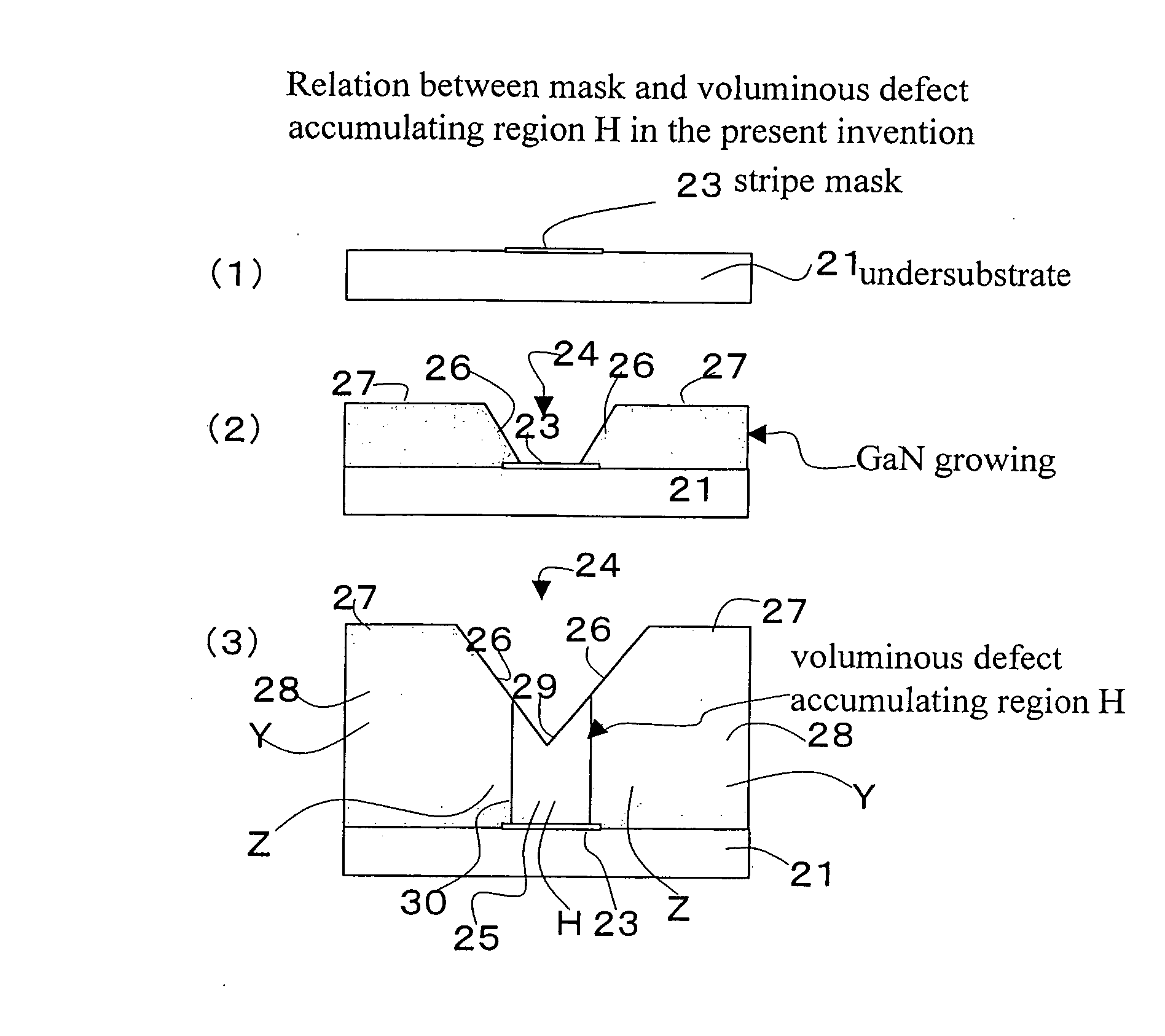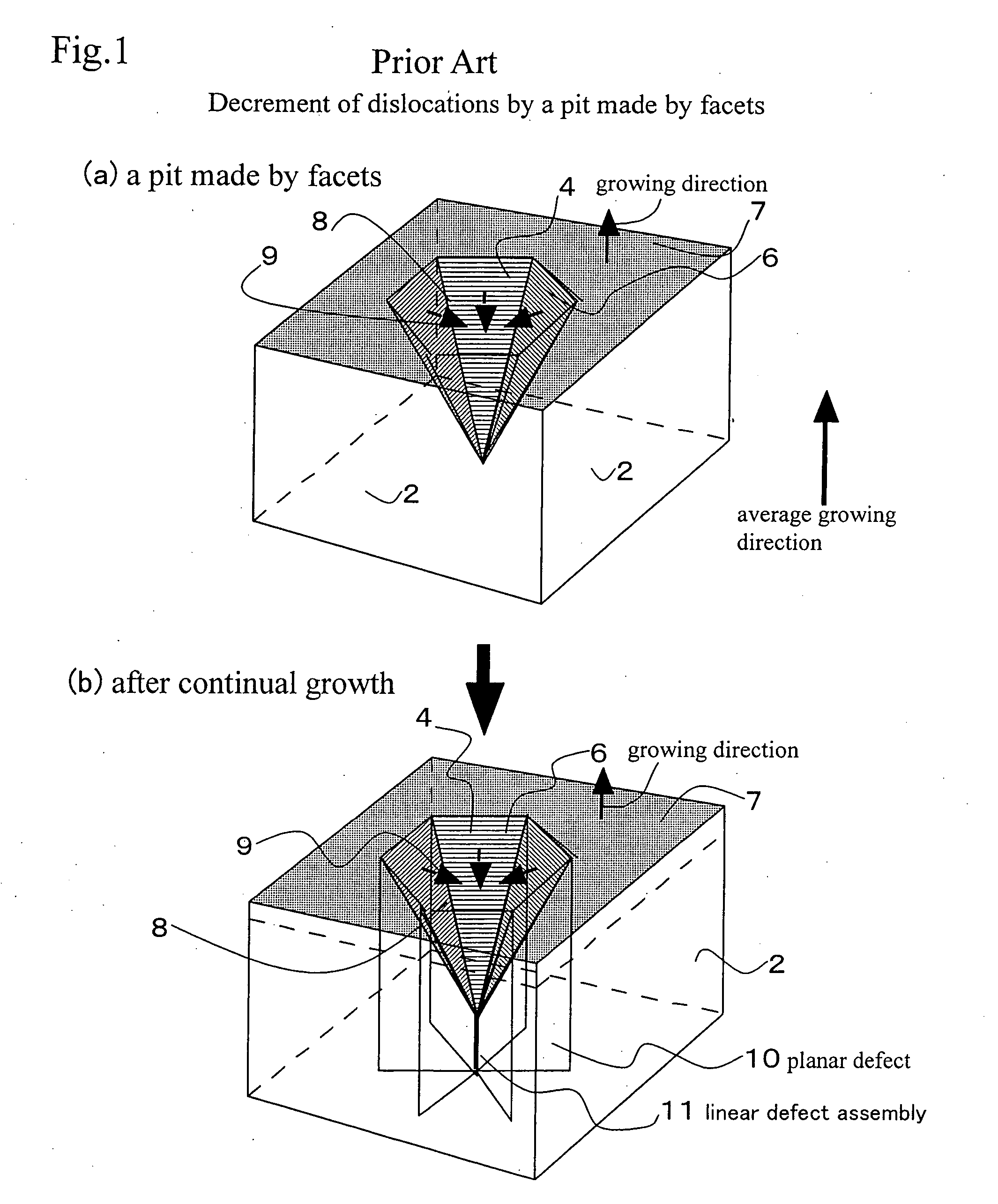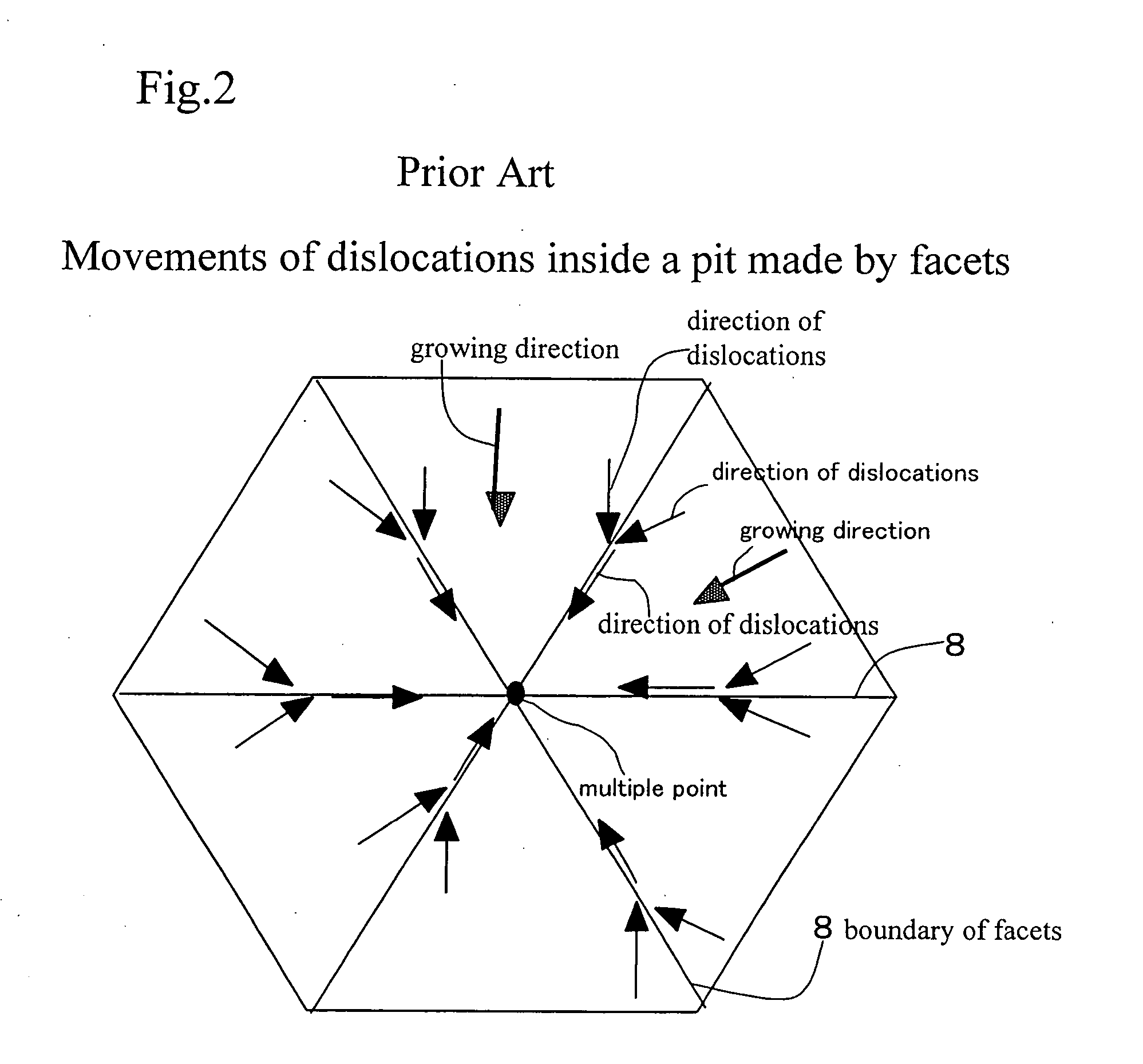Single crystal GaN substrate, method of growing single crystal GaN and method of producing single crystal GaN substrate
a technology of single crystal gan and substrate, which is applied in the direction of crystal growth process, polycrystalline material growth, chemically reactive gas growth, etc., can solve the problems of poor symmetry, sapphire is deprived of cleavage plane, gan films or ingan films grown on a sapphire substrate are annoyed by large lattice misfitting, etc., to achieve large volume, eliminate hazy dislocation diffusion, and large dislocation capacity
- Summary
- Abstract
- Description
- Claims
- Application Information
AI Technical Summary
Benefits of technology
Problems solved by technology
Method used
Image
Examples
embodiment 3 (
Differences of Mask Materials)
(Mask Types; SiN, Pt, W, SiO2)
[0367] A plurality of GaAs (111)A-plane substrates are prepared for examining the differences induced by various mask materials. GaAs (111)A means a (111) wafer in which Ga atoms appear on the surface (GaAs (111)B means a (111) wafer in which As atoms appear on the surface). Masks of Samples J to N are formed upon the GaAs(111)A substrates. [0368] J: covered with a 0.15 μm thick Si3N4 film [0369] K: covered with a 0.2 μm thick Pt film [0370] L: covered with a 0.2 μm thick W film [0371] M: covered with a 0.1 μm thick SiO2 film and with a 0.2 μm thick GaN film [0372] N: covered with a 0.1 μm thick SiO2 film and with a 0.2 μm thick AlN film Samples M and N have complex masks. Sample M is prepared by growing a 0.2 μm GaN layer on the SiO2 / GaAs substrate at a low temperature (600° C.) by the MOCVD method. Sample N is prepared by growing a 0.2 μm AlN layer on the SiO2 / GaAs substrate at a low temperature (700 ° C.) by the MOCVD ...
embodiment 4 (producing of a gan ingot ; figs.12 to 14)
[Embodiment 4 (Producing of a GaN ingot; FIGS. 12 to 14)]
[0405] Embodiment 4 prepares two different undersubstrates O and P.
[0406] Undersubstrate O; a 30 mm q GaN undersubstrate which has been produced by Embodiment 1 based on Pattern A. This is a GaN mirror wafer without mask, which has been prepared by mechanically processing and mirror-polishing the GaN substrate made by Embodiment 1 as shown in FIG. 12(1). Although the GaN wafer of Undersubstrate O has no stripe mask, inherent components (H, Z and Y) play the role of the stripe mask.
[0407] Undersubstrate P; a 30 mmφ GaN / sapphire undersubstrate which has been prepared by growing a 2 μm thick GaN film on a sapphire undersubstrate by the MOCVD, depositing a 0.1 μm SiO2 film on the GaN film, and forming a stripe mask of Pattern A by photolithography.
[0408] The HVPE apparatus holds two undersubstrates O and P side by side on a susceptor and grows thick GaN films on the two undersubstrates O and P simultaneously on the same conditi...
PUM
| Property | Measurement | Unit |
|---|---|---|
| thickness | aaaaa | aaaaa |
| thickness | aaaaa | aaaaa |
| widths | aaaaa | aaaaa |
Abstract
Description
Claims
Application Information
 Login to View More
Login to View More - R&D
- Intellectual Property
- Life Sciences
- Materials
- Tech Scout
- Unparalleled Data Quality
- Higher Quality Content
- 60% Fewer Hallucinations
Browse by: Latest US Patents, China's latest patents, Technical Efficacy Thesaurus, Application Domain, Technology Topic, Popular Technical Reports.
© 2025 PatSnap. All rights reserved.Legal|Privacy policy|Modern Slavery Act Transparency Statement|Sitemap|About US| Contact US: help@patsnap.com



